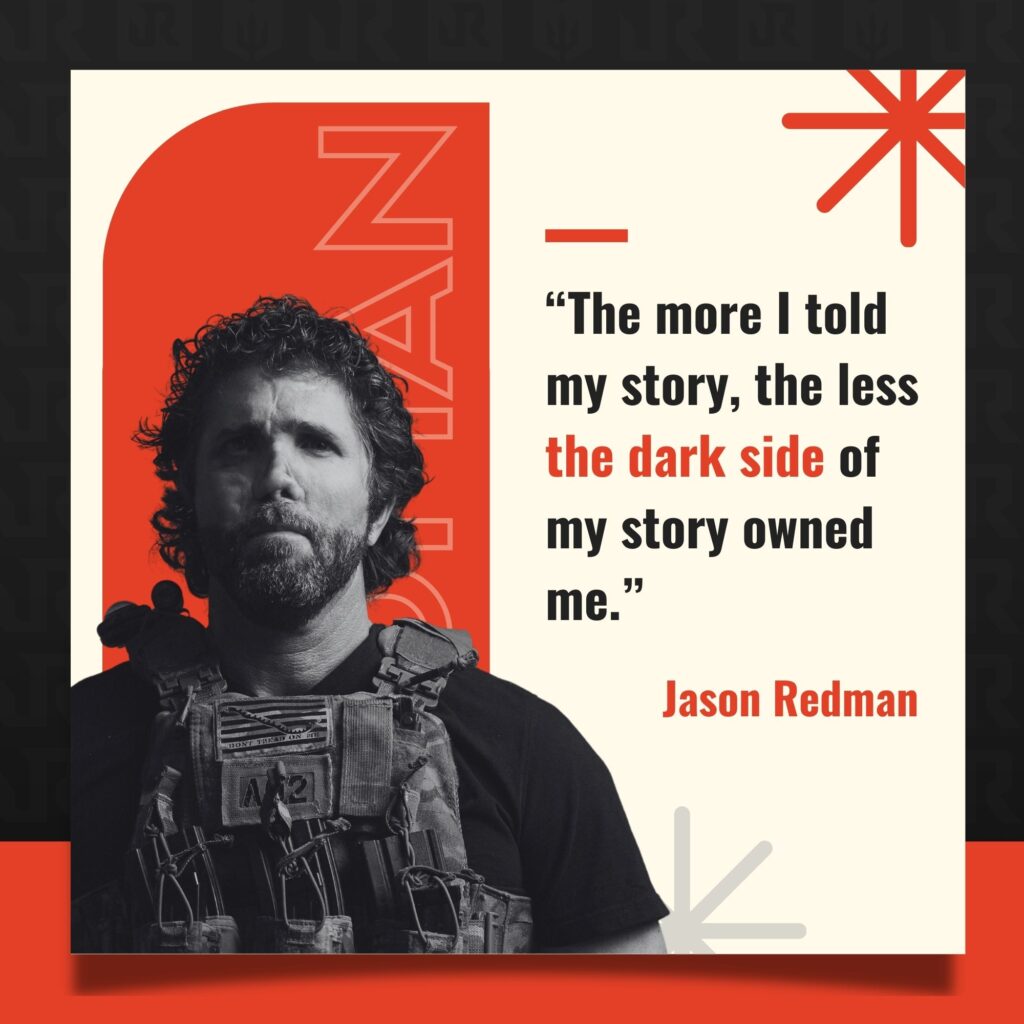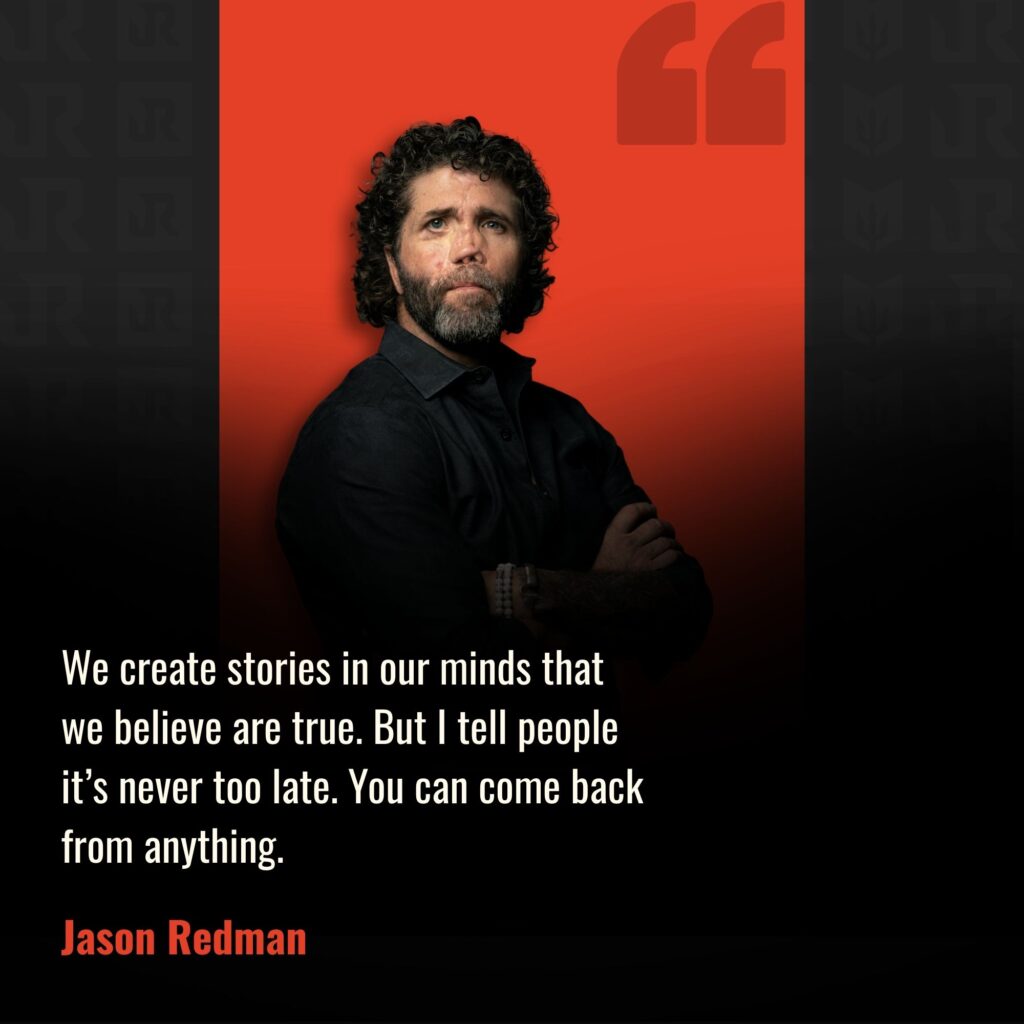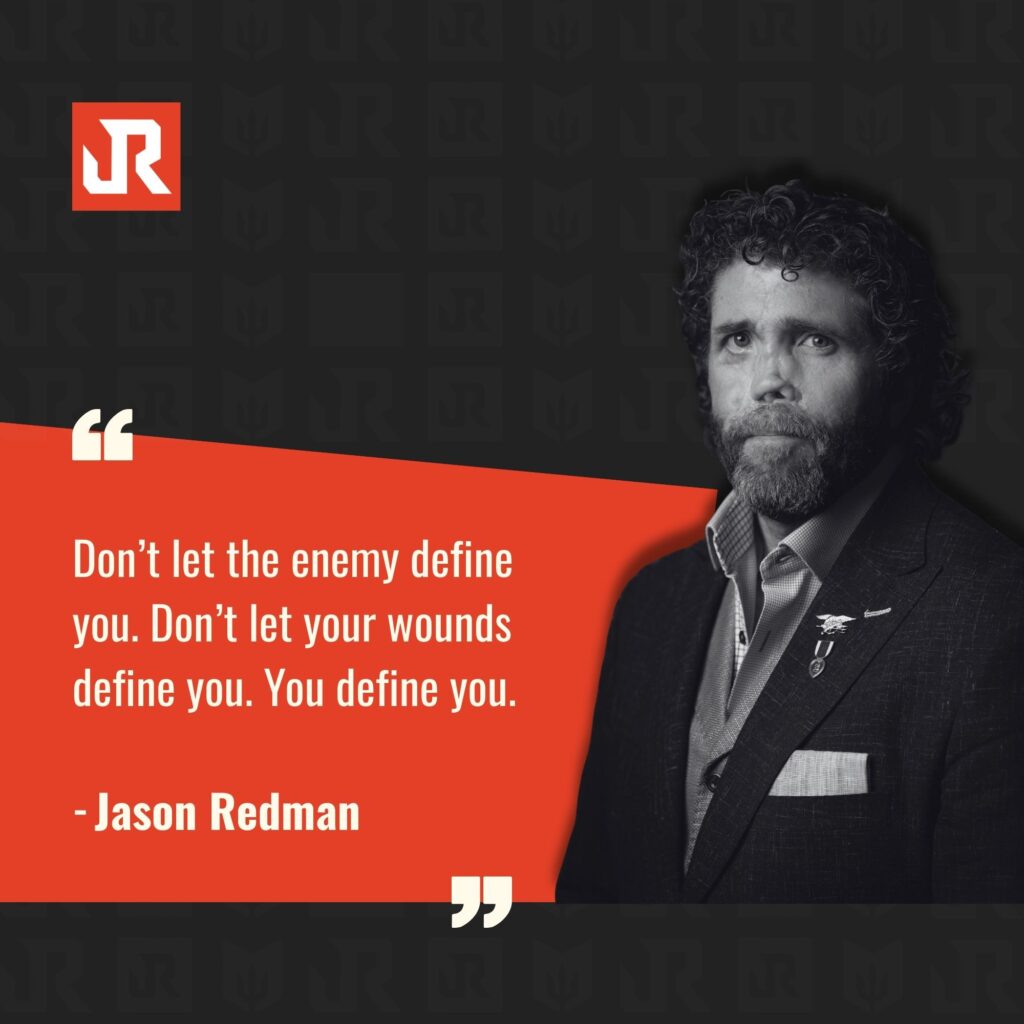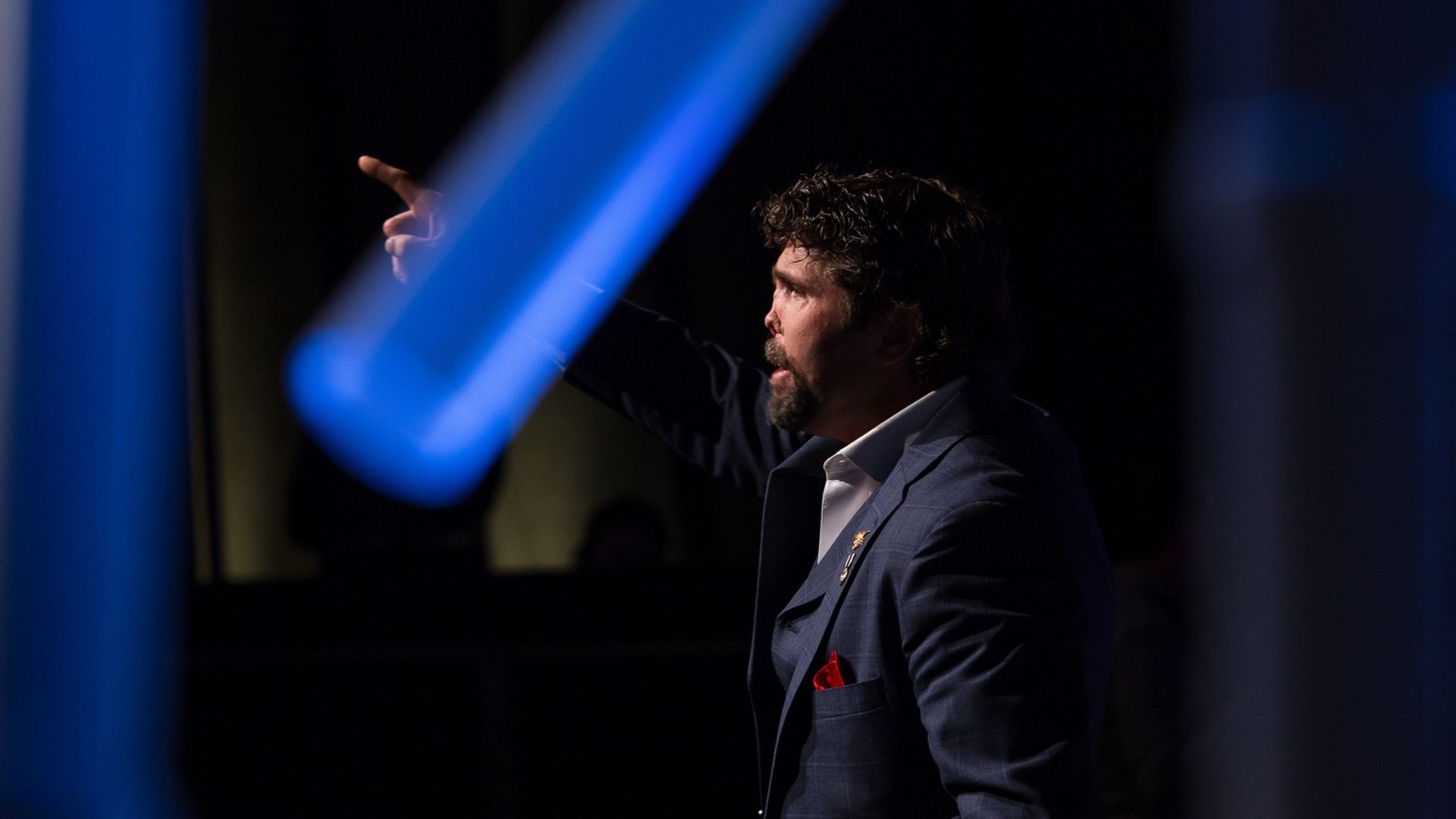Most people think leadership is about managing others. They’re wrong. Strength, balance, and resiliency start with one person – YOU. And if you can’t lead yourself, you sure as hell can’t lead anyone else.
I learned this the hard way. As a young Navy SEAL officer, I thought leadership meant barking orders and looking tough. I was arrogant, undisciplined, and making decisions that put my team at risk.
My commanding officer pulled me aside and delivered a message that changed everything: “Redman, you’re a terrible leader because you can’t even lead yourself.”
That moment forced me to confront a brutal truth. 70% of leadership is self-leadership. Everything else – your ability to influence others, build teams, and accomplish missions – depends on your capacity to lead the person in the mirror first.
The Foundation: Taking Command of Yourself
Self-leadership is about taking absolute responsibility for your actions, your responses, and your outcomes. It’s recognizing that while you can’t control what happens TO you, you damn sure can control what happens THROUGH you.
In Iraq, on September 13, 2007, I got shot eight times, including once in the face during an ambush. As I lay in that hospital bed with 37 surgeries ahead of me, I had a choice. I could become a victim of circumstances, or I could lead myself through the biggest challenge of my life.
That’s when I wrote the sign for my hospital room door: “If you are coming into this room with sorrow or to feel sorry for my wounds, go elsewhere. This room you are about to enter is a room of fun, optimism, and intense, rapid regrowth.”
That sign wasn’t about being tough. It was about self-leadership in action – choosing my response regardless of my circumstances.
The Three Rules That Change Everything
After years of leading in combat and studying what separates those who thrive from those who merely survive, I’ve identified three non-negotiable rules of leadership. Master these, and you’ll build the kind of strength, balance, and resiliency that can’t be shaken.
Rule #1: Lead Yourself First
You cannot give what you don’t have. If your personal life is chaos, your leadership will be chaos. If you lack discipline in private, you’ll lack credibility in public. Self-leadership means establishing standards for yourself that you maintain regardless of external pressure.
This starts with what I call your “daily minimums” – the non-negotiable actions that keep you physically, mentally, and emotionally sharp. Physical fitness. Proper nutrition. Adequate sleep. Time for reflection and planning. These aren’t luxuries. They’re operational requirements.
When I was recovering from my injuries, my daily minimum was simple: get out of bed, do physical therapy, and maintain a positive attitude. Some days, that’s all I could handle. But I never compromised on those basics because I knew they were building my comeback foundation.
Rule #2: Lead Through Inspiration, Not Intimidation
Real leaders don’t need to yell, threaten, or manipulate. They lead by example and inspire others to want to follow. But this starts with how you treat yourself.
Are you constantly beating yourself up for mistakes? Are you setting impossible standards that guarantee failure? That internal dialogue becomes your external leadership style. Learning to love yourself isn’t soft; it’s strategic. You can’t inspire others if you’re constantly tearing yourself down.
Rule #3: Lead Always
Leadership isn’t a role you put on at work and take off at home. It’s who you are, all the time. Every decision, every response, every action is an opportunity to either strengthen or weaken your leadership muscles.
This means making the hard choice when no one’s watching. It means doing what you said you’d do, even when you don’t feel like it. It means maintaining your standards during the good times so you’re prepared when life ambushes hit.
Building Your Internal Command Structure
Self-leadership requires what I call an “internal command structure” – a systematic approach to making decisions and maintaining standards. Without this structure, you’re operating on emotion and impulse, which means you’re not really leading at all.
Your Mission Statement
Every military unit has a clear mission. You need one too. Not some vague “be a good person” nonsense, but a specific, measurable statement of what you’re trying to accomplish and why it matters.
My mission is simple: “To overcome any obstacle and help others do the same.” Everything I do gets filtered through that lens. Does this action support my mission? If not, I don’t do it.
Your Operating Principles
These are your non-negotiable values, the rules you follow regardless of circumstances. Mine include: Always tell the truth. Keep your word. Take care of your team. Never quit. These principles guide my decisions when emotions run high or pressure builds.
Your Performance Standards
What does excellence look like in your life? What standards will you maintain for your physical condition, your relationships, your work quality, your personal integrity? Write them down. Measure them. Defend them.
Building confidence comes from consistently meeting the standards you set for yourself. Every time you do what you said you’d do, you build trust with yourself. Every time you compromise, you weaken that foundation.

The REACT Protocol:
Life ambushes are inevitable. How you respond determines whether you grow stronger or fall apart. I developed the REACT methodology during my recovery and have used it through every major challenge since.
Recognize Your Reality
Stop denying, minimizing, or making excuses. Look at your situation with absolute honesty. What exactly are you dealing with? What resources do you have? What don’t you have? You can’t lead effectively if you’re operating on false information about your circumstances.
Evaluate Your Assets
What tools, skills, relationships, and resources can you deploy? This includes internal assets like your training, experience, and mindset, plus external assets like your network, finances, and available support systems.
Assess Your Options
What are your possible courses of action? What are the potential outcomes of each option? Don’t just look at the best-case scenarios – consider what could go wrong and how you’d handle it.
Choose Your Path and Communicate It
Make a decision and commit to it fully. Half-hearted execution produces half-hearted results. Then communicate your decision clearly to anyone who needs to know. This creates accountability and gets others aligned with your direction.
Take Action and Execute
Move with urgency and precision. Monitor your progress. Adjust as needed. But never stop moving forward. Motion creates momentum, and momentum creates results.
When I was in the hospital, this protocol saved my mental health. I recognized that my military career was over, but my life wasn’t. I evaluated my communication skills, my network, and my unique story. I assessed options from depression to motivational speaking. I chose to become a resilience expert and told everyone about it. Then I started taking daily actions toward that goal.
Physical Leadership
You cannot separate physical and mental leadership. Your body is your first and most important team member. How you treat it determines your energy, your confidence, and your ability to handle stress.
Physical leadership means maintaining fitness standards even when you don’t feel like it. It means choosing nutrition that fuels performance rather than just satisfying cravings. It means prioritizing sleep because you understand that rest is not a weakness.
During my recovery, I couldn’t do the workouts I used to do. But I could do something every day. Even if it was just stretching or walking to the end of the hallway. The specific exercise didn’t matter as much as the commitment to never quit moving forward.
Your physical standards become a metaphor for everything else in your life. If you’ll compromise on your health, you’ll compromise on your goals. If you’ll skip workouts because you’re “too busy,” you’ll skip other commitments for the same reason.
Mental Leadership
Your mind will either be your greatest asset or your most dangerous enemy. Mental leadership means taking control of what goes on between your ears instead of being controlled by it.
This starts with recognizing that thoughts are not facts. Just because your brain generates a negative thought doesn’t mean you have to believe it or act on it. You can observe thoughts without being controlled by them.
I use what I call “mental PT” – daily practices that keep my mind sharp and focused. This includes reading, planning, visualization, and what I call “scenario training” – mentally rehearsing how I’ll respond to potential challenges.
Mental leadership also means confidence training – deliberately putting yourself in situations that stretch your comfort zone and prove to yourself that you can handle more than you think.
The goal isn’t to eliminate fear or doubt. The goal is to act with courage despite fear and doubt.
Every time you take action in spite of mental resistance, you strengthen your self-leadership muscles.

Emotional Leadership
Emotional leadership isn’t about suppressing emotions, but rather managing them strategically. Emotions provide valuable information, but they shouldn’t drive your decisions.
In combat, we had a saying: “Slow is smooth, smooth is fast.” When chaos erupts, the natural tendency is to rush, panic, or react emotionally. But the most effective response is usually to slow down your decision-making process just enough to think clearly while still acting quickly.
This applies to every area of life. When someone criticizes you, when plans fall apart, when unexpected problems arise – your emotional response in those first few seconds determines everything that follows.
I practice what I call “tactical breathing” – a simple technique that activates your parasympathetic nervous system and helps you stay calm under pressure. Four counts in, hold for four, four counts out, hold for four. Repeat until you feel centered.
Emotional leadership also means having honest conversations instead of avoiding conflict. It means addressing problems directly but without attacking people personally. It means maintaining relationships even when you disagree with decisions.
The Compound Effect of Self-Leadership
Strength, balance and resiliency aren’t built through dramatic moments. They’re built through small, consistent choices that compound over time.
Every morning you wake up and choose discipline over comfort, you build strength. Every time you maintain your standards despite external pressure, you build balance. Every time you bounce back from a setback instead of staying down, you build resiliency.
This compound effect works in both directions. Small compromises also compound. Skip one workout, and it’s easier to skip the next one. Tell one small lie, and integrity becomes negotiable. Make one excuse, and excuses become your default response.
The key is understanding that every choice is either building the leader you want to become or tearing down the leader you could be. There’s no neutral ground.
Leading Others Through Self-Leadership
When you master self-leadership, something powerful happens. People start noticing. They see someone who keeps their word, maintains their standards, and responds to challenges with calm confidence. They want to know your secret.
The secret is that there is no secret. It’s just a daily commitment to leading yourself with the same intensity and precision that Special Operations forces bring to their missions.
But when you lead yourself effectively, you give others permission to do the same. Your example becomes a challenge to everyone around you to raise their own standards.
Sometimes working with a life coach can accelerate this process by providing an outside perspective and accountability. But ultimately, no one can do the work for you. Self-leadership is exactly that – SELF-leadership.
Systems That Support Success
Self-leadership isn’t about willpower. It’s about systems. Willpower is finite and unreliable. Systems are repeatable and sustainable.
Create environments that make good choices easier and bad choices harder. Prepare your gym clothes the night before. Keep healthy snacks visible and junk food out of sight. Set up automatic transfers to your savings account. Design your physical space to support your goals.
Build routines that automate important behaviors. My morning routine includes physical training, planning my day, and reviewing my mission and principles. These aren’t optional activities that I do when I feel motivated. They’re operational requirements that happen regardless of my mood.
Track your performance in key areas. What gets measured gets managed. I track my fitness metrics, my productivity, my learning goals, and my relationship investments. The data keeps me honest and shows me where I need to adjust.

The Multiplier Effect
Self-leadership creates what I call a “multiplier effect.” When you lead yourself effectively, you become more valuable to your family, your team, your organization, and your community. Your increased effectiveness opens doors and creates opportunities that wouldn’t exist otherwise.
People want to work with, live with, and follow people who have their act together. When you demonstrate consistent self-leadership, you become a magnet for other high-performers. Your network improves, your opportunities expand, and your impact multiplies.
But it all starts with that person in the mirror. It starts with taking absolute responsibility for your choices, your responses, and your outcomes. It starts with building the kind of strength, balance, and resiliency that can handle whatever life throws at you.
Jason Redman specializes in developing leaders who can handle anything. Whether you’re facing a major life transition, building a team, or just want to take your performance to the next level, I have the tools and strategies to get you there.
The best time to begin building your self-leadership foundation is right now. Get off the X and take action today.


